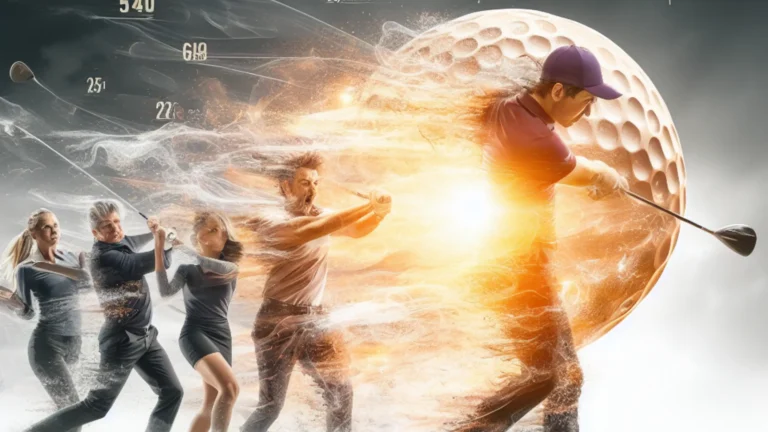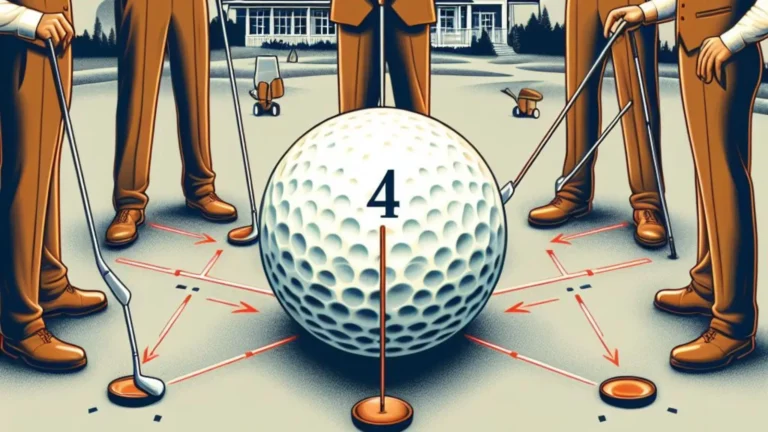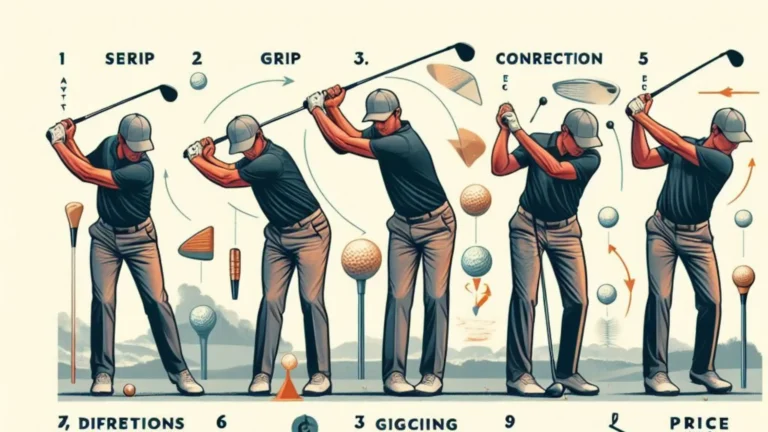The Beginner’s Guide to Hitting All the Golf Shots
Mastering the many different types of shots required in golf can be intimidating for those who are new to the game. However, breaking down the essential shots into drive, iron, chip, pitch, bunker, specialty, and putt techniques simplifies the building blocks for shot-making success. This guide provides beginners with an overview of shot terminology, club selection, and swing mechanics for performing fundamental strokes.
Any complete golfer must eventually develop a variety of golf shots to overcome hazards and approach each hole strategically. While beginners are initially focused on making solid contact, understanding shot types provides a road map for developing well-rounded skills over time through deliberate practice. Study this primer on essential shot techniques to identify those that are frequently used on the course.
The Drive Shot
The big drive off the tee box is golf’s most thrilling — and sometimes nerve-racking — shot. Drivers are distinguished by their large clubhead sizes and long shafts, which maximize distance. Driving requires wide backswings, downward strikes, balanced finishes, and forgiving mishits. Genetically gifted players can drive 300 yards or more, but most beginners start with 200-250 yards.
Driving entails allowing the hips and shoulders to fully turn back before aggressively clearing by bringing the clubhead violently down the target line. Allow the club shaft to flex naturally, then whip on follow-throughs. Choosing tee box-appropriate drivers and premium golf balls gives beginners the best chance of success on their opening drives.
Iron Shots
Many of a golfer’s shots from nearby fairways and around the green are made with numbered irons. From wedges to mid irons, each club offers a unique loft, distance gap, and versatility. High lofted wedges have steep attack angles that pop balls upward, whereas low iron shots bore through the turf with flatter plane swings.
When first learning iron play, beginners should concentrate on consistent speed control, making clean contact to compress golf balls properly, and precise accuracy into targets rather than pure distance. Develop proper positioning, posture, and rotation to ensure consistent impact. Low irons are ideal for punching beneath tree canopies, whereas lofted irons handle tricky raised trouble.
Chips and Pitches
Golfers use the terms “chip” and “pitch” to describe short, specialty run-up shots around the green. Both swing techniques use hands pressed ahead in narrow stances, but there are subtle technique differences.
Chips emphasize letting the loft of high bounce wedges lightly lift backspinning shots, which then roll out to awaiting holes. Optimal chipping involves a low swing trajectory with body rotation to make crisp contact.
Pitches necessitate slightly more wrist action to manually elevate lofted wedge shots toward flags in fuller airborne trajectories with softer landings. The pitch necessitates precise distance judgment, as overly aggressive swings quickly bind greens. Dialing in pitching consistency is linked to slope and contour readings.
Training muscle memory on practice putting greens helps you master your creative chipping and pitching touch. Each well-executed short-game shot type can reduce critical strokes.
Hitting from Bunkers
One of golf’s most recognizable hazards is treacherous greenside bunkers filled with sandy soil that grab speeding clubfaces. Escaping sand requires opening the face of a special wedge and swinging perfectly through the sand, right behind buried balls. Exploding shots instead of propelling them into the air prevents chunks from decelerating. Pay attention to maintaining swing speed even when instinct tells you to slow down. Above all, avoid grounding clubs in bunker floors before any shot, no matter how off-balance.
With practice, beginners can learn proper bunker mechanics to get up and down for par more frequently. However, until trusted sand play is established, consider less risky alternatives near traps.
Advanced Specialty Shots
Skilled golfers have more options for creating creative sidespin on demand or manipulating well-placed recovery shots from odd angles or awkward stances on courses. Common specialty swings such as fades, draws, punches, flops, and stingers show true mastery.
For example, purposefully curving tee shots on dogleg fairways necessitates using controlled draws and fades, which is an advanced beginner technique for bending ball flights sideways. Flopping up steep shots over hazards and stopping them instantly is also a signature recovery shot in serious golfers’ repertoires, requiring precise timing.
While new players concentrate on the fundamentals, be aware of specialty shot possibilities for inspiration. Observing how the best golfers hit miracle shots broadens our conceptual understanding of shot-making possibilities.
Sinking Putts
Putters designed for lightly rolling balls across putting greens play an often-overlooked role in lowering scores and breaking 90. Sinking more putts accounts for upwards of 40% of all golf strokes. Consistently avoiding 3-putts through accurate reading, confident stroking, and useful equipment could save you 10+ frustrating penalty strokes per round.
Unlike other golf clubs, putters have almost no loft and instead use weight distribution for smooth pendulum motions. When gauging speed, always align perfectly parallel to the target lines. The most forgiving putters allow off-center hits to remain online, thanks to alignment guides that prevent pulling or pushing.
The use of trademarked insert face technologies improves topspin responsiveness. Whether using classic blade or modern mallet putter designs, focusing on consistently one-putting separates lower handicappers with each stroke.
Conclusion
All golfers spend years honing their shot-making skills in the driving, approaching, recovery, and putting phases, which are tailored to ever-changing course conditions. While it may seem overwhelming at first, sticking to fundamentals through an organized introduction to shot types provides beginners with a solid foundation for a rewarding lifetime of golf mastery.
Remember that drivers maximize distance, irons handle accuracy, chips/pitches finesse short shots, and putters roll the final stroke. As skills improve, specialty shots provide new creative opportunities. However, to avoid overthinking, stick to personal limits and approach situations from a more strategic perspective. Setting shot-by-shot process goals through continuous practice reduces scores the fastest for satisfied beginners.







